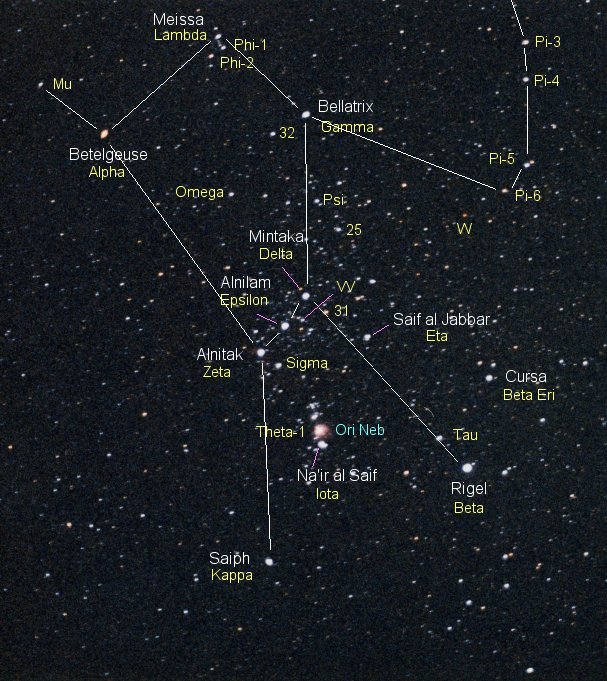*Here's the trick: If you find the two stars that signify the side of the pan (the dipper) opposite the handle on the Big Dipper and follow the line of those two stars in the direction from the bottom of the pan to the top of the pan for approximately five lengths of the line segment those same two stars make, they will lead your eyes almost perfectly to the star that is the tale end of the handle of the Little Dipper, which is the North Star. And then you will know where you are.
I was quite surprised, then, to find my friend Orion in the dark morning sky, in August and September and now October, as I stood outside on the edge of the patio and waited for the dogs to make their rounds. Here is a picture of a drawing I made in my field notes journal on Monday, September 22, 2014.
That morning I wrote, "Centered in my circle of sky is the constellation Orion the Hunter, as though he was placed there on purpose. In the coming days, I believe he'll be moving west." It makes logical sense of course for Orion to be there where he's been in the southeastern sky. Every morning he is a little further west, now nearly out of my sight behind the leaves of the birch tree, especially if I happen to be out there closer to 6am than to 5. So every morning it's a little earlier when he reaches that point in my hexagon where I first spotted him when school started in August, even if I'm not there early enough to see him. Soon he'll cross midnight and it will be not morning but night when he's in my designated section of sky, and by December or January it will 9pm or 8pm and so on until he disappears in the springtime, washed out by the light of the sun.
I found the star map below from a fantastic website called Stars that is the creation of a retired University of Illinois Astronomy Professor named Jim Kaler. The chart probably has too much information in it, but I hope it corrects my drawing and puts names to some of the elements. There are some pretty famous stars in Orion, such as Betelgeuse, Rigel and Bellatrix. Stars, shapes, names, figures, stories: it seems like we've been writing our ideas across the night sky for a long time, turning these random collections of dots of light into characters and mythologies. As Ted Kooser suggests in his poem "Starlight,"** when we look at the stars we are looking into the past, since the light we see has taken years and decades, traveling at the speed of light, to arrive in our vision. But we are also looking into the past of our own species, those ancient tribes and cultures who wrote their own sort of graphic novels on the dark canvas overhead, Orion the Hunter stalking his prey across the winter night.
Every time I see Orion, I am somehow young again, a child and in awe. There is so much more to learn.

**Starlight
All night, this soft rain from the distant past.
No wonder I sometimes waken as a child.
--Ted Kooser

On NPR (I can't remember the show) a scientist was saying that we only understand about 5% of the universe--95% is a mystery. It also talked about how the light reaching us from some of the stars is thousands of years old. We think of the stars as specks but they make me feel like a speck. I never knew Orion--but the dippers oversaw many of my childhood hide-n-go-seek games. We need to go backpacking (away from light pollution.)
ReplyDelete